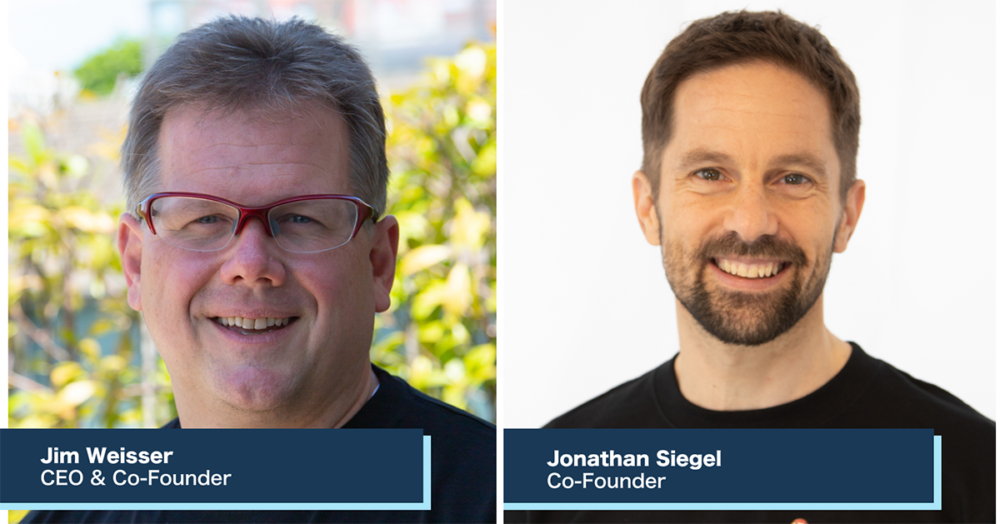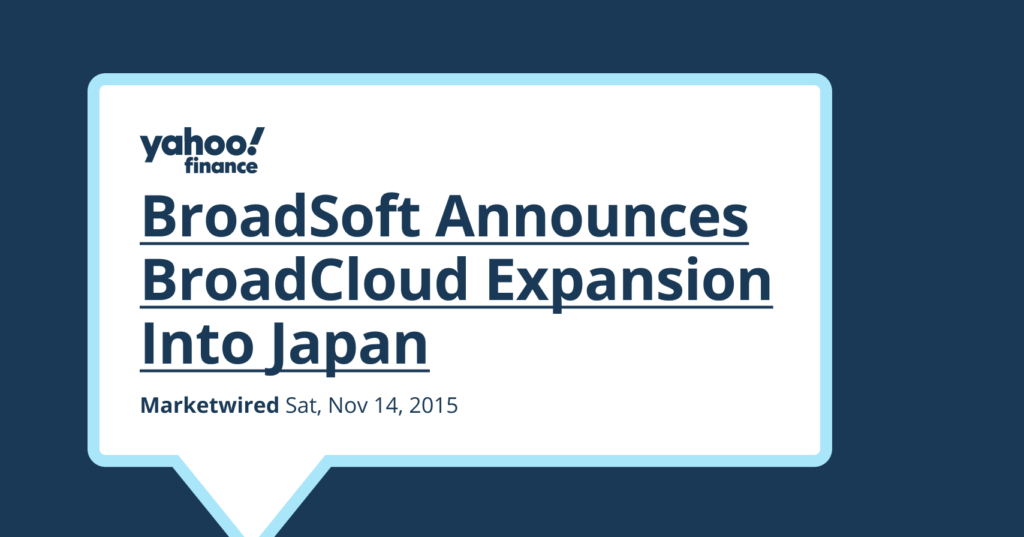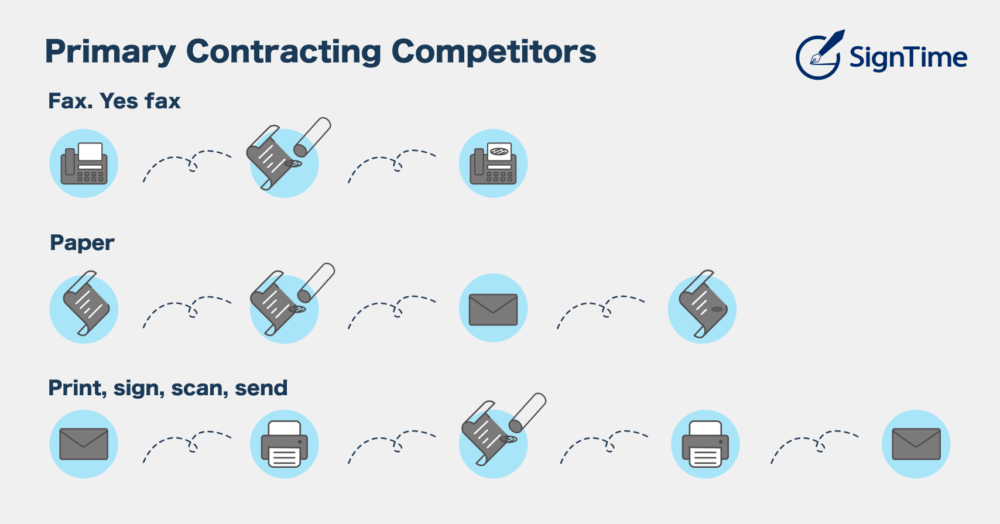release:
update:
Founder Interview: Technology Entrepreneurship in Japan – Part One

This summer SignTime will be running a blog series on a number of areas related to the technology industry, innovation, start-up culture, and growing a technology business in Japan. We’re starting off this series with a “meet the founder” interview with our CEO and co-founder, Jim Weisser. This is the first of several parts.
Jim, many entrepreneurs have started multiple companies. Is SignTime the first company you’ve started, or have you started several?
SignTime is my fifth company. The first one was a complete flop. The second was okay. The third was very good—the fourth, no, another flop.
Can you summarize the steps that you went through from idea to fruition?
Let me talk you through how we approached it—from the market opportunity to idea and to why I’m running the business now. My business partner, Jonathan Siegel, actually has a very substantial background in e-signatures—he’s a pioneer in the space. He has three patents, and we’ve jointly filed for a fourth for SignTime’s business.

He approached me in 2018 after I had sold a business to networking giant BroadSoft and Cisco, and was going through the process of asking myself: ‘am I staying or going…what am I going to do?’ I ended up leaving Cisco in 2019 about a year after the acquisition.

At that point, in 2018, I was researching the Japanese technology market, and I looked at the e-signature market. I thought a lot about my past experiences. I had a business previously that I thought was completely ready to go in 2006, and was maybe late to market, but the market didn’t actually take off until 2015, 2016, or arguably, just now, depending on how you want to look at it—in cloud-based telephony.
In 2018 I thought, okay, I’m not going to be too early to a market again. I don’t want to start a technology business and spend 25 years waiting for the market to develop. I’d be in my mid-70s at that point!
The last time I went through this process, if I look at my time, both running PBXL (which was sold to Cisco) and then working inside of BroadSoft and Cisco, that ended up being 15 years in total. I wanted a temporal indicator—something that would show me my timing was right because a lot of companies that are great ideas, but too early, go bankrupt.
If you’re familiar with Groupon, a friend of mine did a company like that here in Tokyo on cell phones in 2001 or 2002, but it died because the smartphone wasn’t around yet. Another friend of mine started a company that ended up being like TaskRabbit in the U.S., or Airtasker in Australia, which is kind of a part-time worker thing like today’s Any Times in Japan. Again, it was too early. And so, being too early to a market is at least as dangerous as being too late because you’re not going to have enough buyers and the market will be too small.
In Japan especially, buyers are very, very slow. You have very, very loyal customers, but you end up in a situation where those first customers take a really long time to get there.
To illustrate this point, when I went to sell my last company, they asked me about my churn rate, and I said, it’s 5%. The response was: ‘5%? That’s tremendously high. I can’t believe you’re even talking to us’ kind of thing. I was surprised—like, really? You think that’s high? And they’re like, ‘yeah, that’s 60% a year.’
And I said, no, no, no, that’s 5% a year. (It was less than half the typical US churn rate.) They said, ‘Wait, is that the yearly churn rate on revenue or customers?’ It was between 4.8% and 5.3% for both. So, there’s a very different willingness of customers to leave in Japan, compared to other markets.
So that’s true once you’re established to some degree, but until you’ve hit cash-flow positive, you’re just scrapping and scrimping.
I think that’s a big thing. If you can get your first few customers in the door, maybe even before you’ve incorporated, but anyways while you’re still kind of in the idea phase, the likelihood of you having success is very high.
The hard part is surviving long enough to get the business actually established. And that’s different in different industries, but, in the industry I know, technology, it can be a million dollars a year to keep the lights on.
Once you have that core business, there’s a lot you can do with it because you’re no longer worried about starvation every month. Or maybe a better analogy is that you’re not worried about running out of water every month. Then, when you’re a slightly bigger company, you worry about food. But at the beginning, you’re thinking ‘am I going to have drinking water?’
Getting back to your original question, a compelling idea is really important. Then, initially, shop it around to people, test it, and find customers. It’s important to do this preliminary work before you actually launch a company.
Why would you ever spend the money on incorporation otherwise? If you have nothing people are going to buy, why would you incorporate?
You seem to be saying that it’s really important to make sure an idea is going to fly. You bounce it off people and see if they’re interested, develop relationships, and even start to cultivate customers. Is that right?
Yes, you want to pre-sell as much as you can. For my second company, a lot of people were saying, yes, good for you, gambatte [Japanese: good luck]. I thought they meant that they were ready to be customers, but they weren’t. It had nothing to do with willingness to be customers. They were just trying to encourage me personally. To your point, you do want to talk to other people. You want feedback to make sure you’re not completely off base.
So you need to avoid falling in love with your idea?
Yes, and I think there are a lot of great ideas. There are a couple schools of thought on this. Some people believe the right idea can rule the world. Then there’s the belief that the right idea doesn’t win without excellent execution—and, usually, it’s not even as good an idea. I’m firmly in the second camp. A just-okay idea executed fiercely and quickly is going to win over the better idea nearly every time.
One that’s not executed as well?
Well, an idea that’s executed more slowly. The history of tech shows us this. Fast and good execution usually wins in a market because getting to scale is so important.
What were the key steps you went through?
Step one we’ve discussed—whether there’s an opportunity, right? So, yes, there is an opportunity.
Then, the initial discussions were whether that opportunity for e-signatures is now. Initially, in my view, it was possible, but I had no reason to believe it’s now. There was no compelling event, the temporal indicator I mentioned earlier.
That changed when COVID hit, and since we’d already laid the groundwork for the company in previous discussions (and being serial entrepreneurs) getting it up and going and doing some of our first pitches was doable. The market changed quickly and gave us an opening for SignTime.
I see on LinkedIn July 2020 is when you started SignTime?
Yes, COVID was kind of the key ingredient in this. COVID—that’s where, for me personally, I went ‘the market opportunity is definitely here now.’
There’s a shift in Japan towards digital transformation. People want to do more things online. They want to not come to the office. People were literally coming to the office just to do the digital hanko [Japanese: a stamp used as a signature].
Okay, and that’s what you provide? Digital signature and electronic contract signing, a digital hanko?
Yes, a digital hanko and regular signatures, too.
Are you familiar with the company DocuSign?
Yes, sure, they’re a great company. In Japan, 2% of white collar workers have adopted e-signatures, so it’s not common at all (2021 data.) This is one of the things that we have to spend a lot of time on—people who keep telling us that, oh, you’re competing with this company or that company. But, this is probably a step five or later comment. Our real competitors are paper, fax, and print–sign–scan–send. Those are the big ones for us, based on low adoption rates so far in Japan.

I would never want to go into something that’s already been picked up heavily in the market.
For example, I would never want to be a mass market beer in Japan. That’s crowded. It’s a zero-sum game. Beer consumption is also declining, so you have negative demographic winds along with a very competitive market. A niche brewer, someone like Baird Brewing, they got here 15, 20 years ago, when microbrewing was just opening up and I have huge respect for what they have accomplished. But, I think the first microbrews happened in Japan in 1996. And it was like ‘oh, okay, here’s something we can do.’ Here’s something that’s different.
But if you’re going to do a well-known product, you need to be different in some way, and you need to be perceived as adding additional value in some way the larger companies don’t.
In technology, there is a perception, and I think it’s reasonably fair, that the U.S. is much stronger at software development, implementation, and rollout. Part of that is because Japanese companies tend to insist on perfection—rather than implementing, adjusting and iterating. It’s kind of funny, the things they’re willing to be iterative on and make slow changes on are factory floor processes, but the willingness for that to show up in typical Japanese software is near zero. It’s very, very low.
That’s an impediment for a lot of foreign companies trying to come into Japan because their QA/QC, or quality assurance or quality control, will never be high enough for a typical Japanese company.
Then for us, three pieces just all came together. We had the chance to bid on a substantial deal in July of 2020, before we even finished incorporation, because we’d already done some of the tech work. That was our first big potential contract.
It’s worth noting that the way I usually do the technology development is that I’ll spend some money on development before I know if there’s a business or not because just having something that kind of works has value, it helps prospective customers and partners visualize what you are working on.
And it may be that you don’t get anything, it doesn’t work, and you end up throwing it out. But if you have the resources, it’s better to spend $10 to $25 thousand dollars on some initial development. But that’s not, you know, building the whole company, spending money on accountants, lawyers, and whatever, and then discovering that there’s no market.
Okay, so what was the next step? At some point, you’re wanting to get money, so how are you raising money? Are you putting your own personal savings in?
In SignTime’s case, both my business partner and I have had reasonably good exits in the past. So we were able to self-fund the first round of the company. After that, we worked with Shizen Capital, which is a company that focuses on seed and early-stage start-ups in Japan. We’ve raised from angels as well.
Is your co-founder also Western?
Yes, like me, Jonathan Siegel is originally from the U.S. He’s from the west coast though, so he doesn’t have the ability to speak Texan quite the way I do.
I’ve heard Japanese VCs are somewhat risk averse. Have you found that to be true?
That’s kind of a complicated question. Traditionally, that’s definitely been true. If you look at a Japanese VC or VC firm that’s 10 years old or older, I think that’s probably the case. There are companies that have come up recently for which that’s not the case. They’ll do seed, even pre-seed rounds and these kinds of low-end things. The thing is, I’ve been an active angel investor myself as well. From the time I sold PBXL in 2015, I’ve been active in the angel community. The people that angels often co-invest with are smaller VCs, and you end up with this kind of back and forth. Since founding SignTime though, my investing has dropped off since I am 100% committed to SignTime.
Every start-up I’ve talked with has discussed the importance of people. Can you talk about what you’re looking for in someone who is interested in joining??
I think, typically, if you’re in a start-up, you’re hiring for potential more than you are for the past. At a larger company, you want to hire someone who’s done exactly that job before because then they’ve at least demonstrated some competence. In a smaller company, the job is going to be different in two years if you’re a fast-growing start-up, so you’re looking for people with potential and flexibility.
There are some other things I like to look for as well.. One, I like to pick people I worked with before. My first two hires were people that I’ve done business with – in one case and I worked with for six years in the other case. So that was kind of easy.
The next thing that we tend to look for is yaru-ki [Japanese: motivated], or your willingness to kind of go for it. Willingness and flexibility [Japanese: yoyu 余裕] are important. Since we were hiring in the midst of a pandemic, the ability to do in-person interviews was pretty low. But we did meet people that way.
A gazelle is a term the OECD uses to describe a fast-growing start-up. The kind of person that you need for a gazelle-like company is someone who can deal with change every quarter. That’s very hard.
One thing that’s materially different now from the early 2000s is me – I’ve had some successes, and some failures which is very different than 20 years ago. I’m not famous in Japan, but my name is out there. I think I may still have a Japanese Wikipedia page, but I don’t have one in English.
Because of the earlier experience, there were people who said, ‘I want to work with this founder and the founding team.’ This time, selling that to new hires was actually much easier than what we’ve seen before; part of it is that the hiring landscape has changed and part is that I’ve had some personal success. Regardless if a founder has a profile or not though, getting good people into a company at the earliest stages is critical. They have a huge organic impact on the future culture of the company so getting people who have high energy, good intelligence and flexibility is really important.
To be continued…
